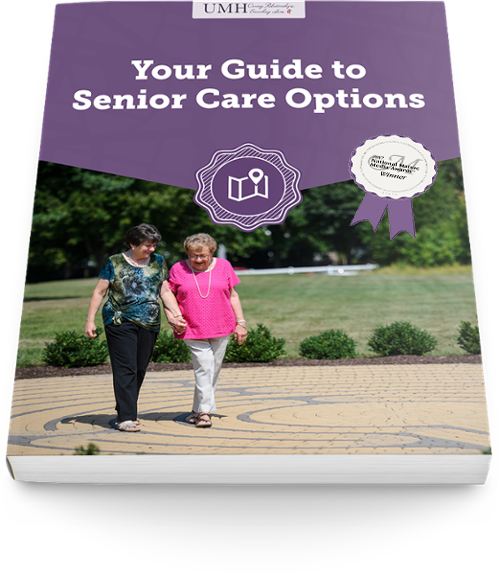+1 (877) 929-5321
+1 (877) 929-5321
Happily Ever Aging
...a UMH Senior Living Blog
Everything you need to know about caring for your loved one - at home or at a senior living community.
Independent Senior Living | Senior Living Communities CT | aging well | assisted living | community | older adults | senior health | senior health tips | seniors | skilled nursing communities
Independence is a hallmark of adulthood—one that, for many people, the mere thought of losing is enough to cause profound distress. As we grow older, maintaining independence becomes critical as our bodies and minds begin to reflect the wear and tear of life. A strong sense of independence is essential for seniors' physical, mental, and emotional health. For senior living communities committed to exceptional living and high-quality care, preserving older adults’ independence is at the heart of the journey every step of the way. However, the perception that senior living restricts an older adult’s ability to remain independent can cause resistance to this move, even if a senior can no longer safely live at home. In this three-part series, we will explore how a senior’s independence is honored and prioritized at each level of care: independent living, assisted living, and memory care or skilled nursing. Last month, we discussed what seniors and their loved ones can expect from independent living communities. This article will explore how independent living communities honor a senior’s sense of independence. The Pillars of Independence How an older adult defines independence can vary from person to person. For some, independence may mean being able to drive for as many years as they can. For others, it may mean being able to style their hair each morning. Senior living communities' efforts to maintain senior independence are rooted in a commitment to healthy aging. In support of that goal, we have compiled a brief list of independence “pillars” in the world of senior living.
Share
Holidays | Independent Senior Living | Senior Living Communities CT | aging well | assisted living | community | older adults | senior health | senior health tips | seniors | social isolation
Twinkling lights bring gaiety to quiet neighborhood streets. Decorations adorn local shops in all shades of reds and greens. The scent of frost and peppermint fills the air. For many, the holiday season is a time for joy and celebration. For others, however, the holidays come with mixed emotions. Seniors and their caregivers alike can struggle with stress during the holiday season. For caregivers already navigating a complex balance of work, life, and caring for a senior loved one, the holidays can add unnecessary frustration and unwanted pressure in the form of added responsibilities, lengthy to-do lists, and caregiver burnout. For seniors, the holidays can create or amplify feelings of anxiety, discouragement, and grief. Memories of Yuletides past can be a painful reminder of the family and friends that are no longer here and can highlight the physical challenges and changes that have come with aging. Many older adults also struggle with social isolation and loneliness, which can be intensified by the cultural emphasis on companionship during the holidays. This can especially be true of older adults who are physically and/or emotionally distant from their loved ones, live alone, lack reliable transportation, have lost a spouse or close friends, or are homebound. Combating social isolation and feelings of loneliness, especially among older seniors, cannot be overstated. In addition to affecting emotional and mental well-being, these feelings can significantly impact a person’s physical health and longevity. With the holiday season underway, we have examined a few of these health impacts and offered ways to help alleviate the isolation and loneliness an aging loved one may experience during this time of year. Read on to learn more.
Share

Get the award-winning guide and subscribe to our blog.